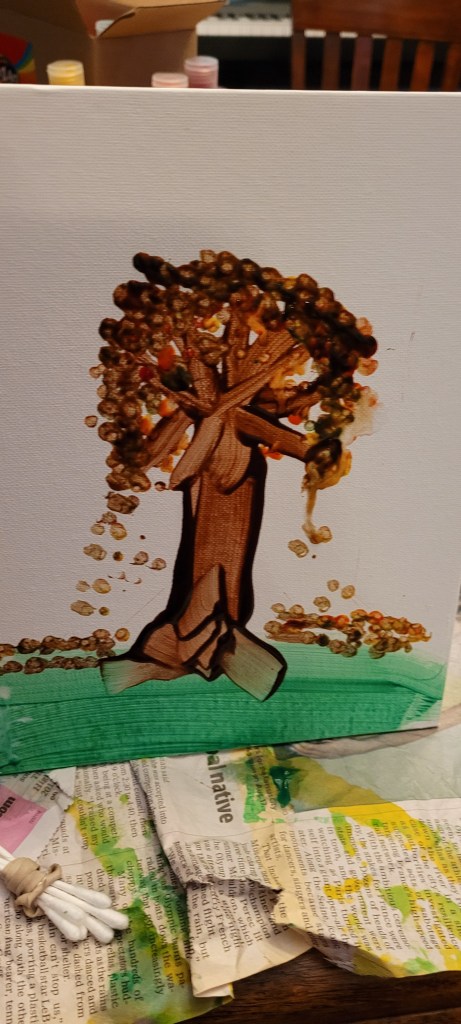Beautiful Autumn Q-Tip Trees
Explore a park with trees and talk about the layers of color that the seasons show. If you don’t live in an area that gets beautiful fall colors or no fall season at all, below are some samples of seasonal colors. Or, a variation could be a green tree or palm trees etc.

The How to:
- Grab plates and paints, q-tips and a tree template
- Dip the bunches of q-tips in the various color blobs and dot on the paper
- As colors dry, add more layers to add a detailed tree dimension.
Materials:
- Tree template
- Tempera paints
- Q-tips
- Rubber bands
- Paper plates or any plates
The Process…
The first part of this art lesson was exploring a local park during the autumn season. We drove around and walked around looking at the different trees, the colors, textures and more. It was fun to observe the shapes of the trees and the ways the leaves shaped the tree. We examined the colors fading into one another based on the direction and amount of time of sunlight. This helped us for the next step.
We gathered materials and then sat down to work on the trees. With a new perspective from seeing the trees up close, the boys had a better understanding of the blending of colors.
Q-Tip Tree Art





Idea courtesy of Play Street Museum and One Little Project
- Choose a template or have child draw the tree freestyle
- Bind 5 q-tips with a rubber band to make a group
- Fill in the color of the tree base and branches before doing the bright colors. It’s best to do this and let it dry first.
- Place a few colors (yellows, oranges, reds etc.) together in a circle on plate
- Gently dip the q-tip in the color pool to make a multi-colored q-tip
- Dab repeatedly for desired effect.
- Drying the colors and layering creates a deeper and richer color.
- Possibly add in grass or other details after.
Notes: Using the q-tips is great but the downside is that the colors often blend into a brown color if dipped too often. Have lots of groupings of q-tips to dip in the colors so they don’t smear or get brown. The more often you refresh the q-tips the better and more vibrant the colors.
This was a simple set up and easy clean up. Fun, quick and colorful. While it was not a complicated art lesson or steeped in history like the Art Through the Ages curriculum, it was engaging. The eldest child did not enjoy it quite as much as the other two, but he still thought it was fun enough because it was so simple and quick. The most unique part of this art lesson was that the bunches of q-tips created a fun leaf pattern that was unexpected. Instead of needing paint brushes or complicated techniques, anyone at any level could make a tree.